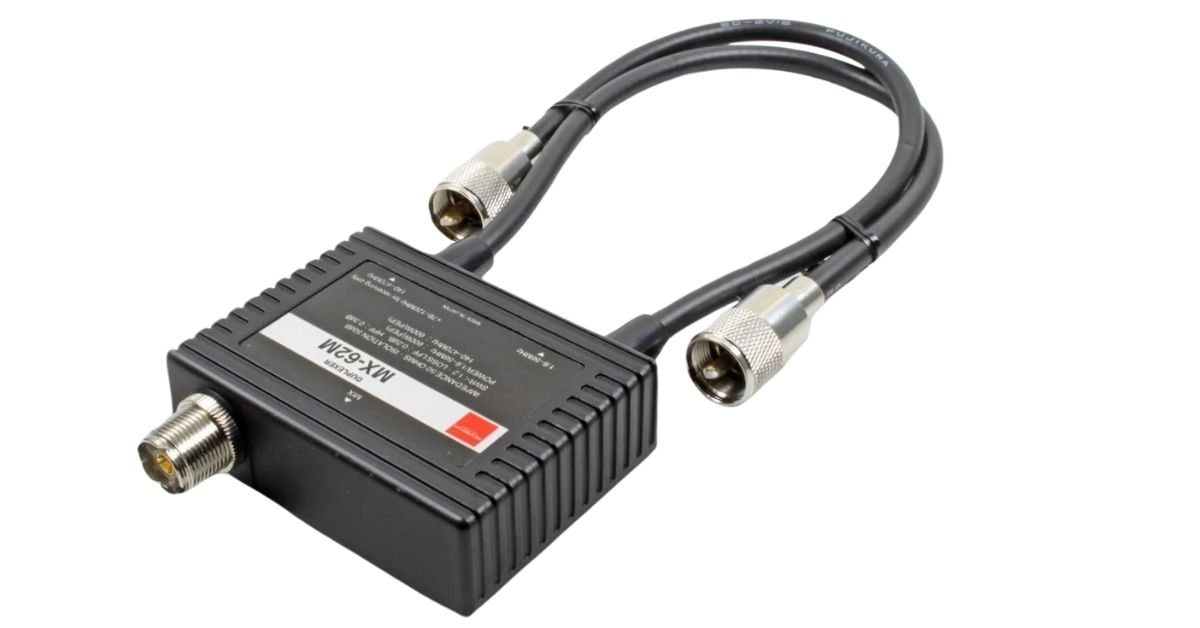A duplexer is a device that enables simultaneous sending and receiving of signals over one channel, using filters for isolation.
What Is A Duplexer?
In the world of communications, a duplexer is a little device that plays a huge role. It allows two-way (or “duplex”) communication over a single channel or path. Think of it like a traffic cop for signals, making sure your radio or radar system can both send and receive messages without those signals crashing into each other.
How Do Duplexers Work?
Duplexers are all about filtering and isolation. Here’s a quick breakdown:
- Three Ports: A duplexer has three ports – one for the transmitter, one for the receiver, and one that connects to the antenna.
- Filters: Inside the duplexer are filters that are carefully tuned to the frequencies used by the transmitter and receiver.
- Isolation: This careful filtering and design make sure signals from the transmitter can only flow to the antenna, and signals from the antenna only flow to the receiver.
This way, your device can both “talk” and “listen” at the same time, without causing a jumbled mess of signals.
Types of Duplexers
Duplexers come in a few different flavors, each with its own way of separating signals:
- Frequency-division duplexing (FDD): This is the most common type. Filters are used to separate signals based on their frequency. The transmitter and receiver operate using different frequency bands.
- Time-division duplexing (TDD): Used a lot in radar systems. The duplexer acts like a fast switch, alternating between sending and receiving signals in quick bursts of time.
- Polarization duplexing: This type separates signals based on their polarization (think of it as the orientation of radio waves). It’s often used in satellite communications.
Where Are Duplexers Used?
You’ll find these clever devices in all sorts of communication systems:
- Cell Phones: Yep, there’s a tiny duplexer in your phone allowing you to talk and listen to your friends at the same time.
- Radio Repeaters: These extend the range of radio communications. A duplexer allows the repeater to receive a weak signal on one frequency and re-transmit it more powerfully on another.
- Radar Systems: Duplexers help radars transmit powerful signals and then switch to receive mode to detect faint echoes coming back from objects.
Benefits of Using a Duplexer
Here’s why duplexers are so important:
- Efficient use of spectrum: Allows transmitters and receivers to use the same frequency band, saving valuable space on the airwaves.
- Enhanced communication: Allows for full duplex conversations or continuous data transmission and reception.
- Reduced interference: Prevents powerful transmit signals from overwhelming sensitive receivers.
Table 1: Examples of Duplexer Applications
| Application | Type of Duplexer | Purpose |
| Cell phone | FDD | Separate transmit and receive frequencies |
| Two-Way Radio | FDD | Allow simultaneous talk and listen |
| Radar | TDD | Transmit powerful pulses, then listen for echoes |
| Satellite Systems | Polarization | Separate signals based on their orientation |
Designing and Optimizing Duplexers
Building a great duplexer isn’t as simple as throwing a few filters together. Here’s what engineers need to consider:
- Frequency Separation: The further apart the transmit and receive frequencies are, the easier it is to design good filters.
- Isolation: This measures how well the duplexer keeps transmit signals from leaking into the receiver. The higher the isolation, the better!
- Insertion Loss: This is a measure of how much signal power gets lost as it passes through the duplexer’s filters. We want this to be as low as possible.
- Power Handling: High-power applications, like those in radar systems, need duplexers built to handle strong signals without damage.
Challenges in Duplexer Design
Duplexer design can be pretty tricky! Some of the challenges include:
- Tight Frequency Bands: In crowded parts of the radio spectrum, finding enough space for transmit and receive frequencies can be tough.
- Harmonics: Transmitters can generate unwanted signals called harmonics. Duplexers need to be designed to suppress these to prevent interference.
- Temperature Stability: A duplexer’s performance can change with temperature. Careful design and materials are key to keeping performance consistent.
Advanced Duplexer Technologies
While we’ve focused on the basics, engineers are continuously pushing the boundaries of duplexer technology. Here’s a peek at some exciting developments:
- Circulators: These devices use magnetic fields to create a circular path for signals, helping to improve isolation in duplexers.
- Acoustic Wave Duplexers: These tiny devices use sound waves instead of radio waves, allowing for super-compact duplexers built into things like smartphones.
Table 2: Challenges and Solutions in Duplexer Design
| Challenge | Solution |
| Tight Frequency Bands | Use advanced filter design techniques for sharper filters |
| Harmonics | Integrate harmonic suppression filters |
| Temperature Stability | Careful material selection, compensation circuits |
Duplexers: Little Devices, Big Impact
While they might fly under the radar, so to speak, duplexers are unsung heroes that make many modern communication systems possible. From the cell phone in your pocket to the radars tracking aircraft, these clever devices ensure clear signals and seamless two-way communication.
Conclusion- What Is A Duplexer?
In short, a duplexer is a device that allows a transmitter and receiver to share the same antenna. This is done by using filters and clever design to isolate the transmit and receive signals. Duplexers are essential components in many communication systems, ensuring efficient communication and preventing interference.
